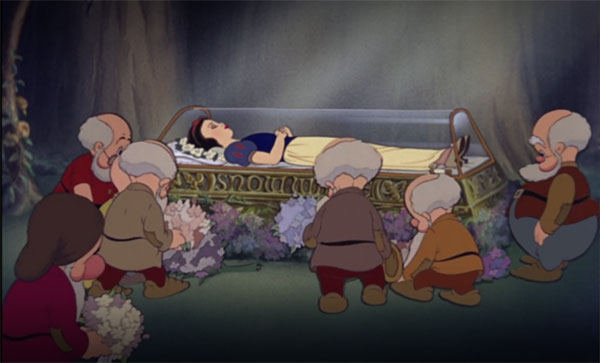
I can’t think of a better way to start this series than with the original Disney feature film. My goal with this project is to expand my knowledge of classics from the past and present. I want to discover parts that I had missed from classics and lesser-known gems. We wouldn’t have The Walt Disney Company as we know it without Snow White and the Seven Dwarfs. It paved the way for everything.
Entire books have been written about the production of this film, so I won’t try to cover all the history in this introduction. It’s still important to build the foundation, however. Disney had succeeded with Steamboat Willie and other shorts, but revenue wasn’t keeping up with rising costs. Walt made the risky choice to create something entirely new — a feature-length animated film. The term “Disney’s Folly” is well-known in the lore of this project, and there were serious risks. The budget started at $250,000 and ballooned to well over $1.4 million by the end.
Based on a Grimm fairy tale published in 1812 called Snow White, this film changes some of the well…grim aspects of that tale. Even so, a dark undercurrent of violence, jealousy, and darkness permeates this Disney film. Several moments surprised me, including the queen’s ultimate demise. Adapting this story into family entertainment was a big challenge, and that makes the ultimate success even more impressive. Snow White and the Seven Dwarfs premiered in 1937 to rave reviews and a massive box office. Let’s dive into the movie and my reactions to watching it today.
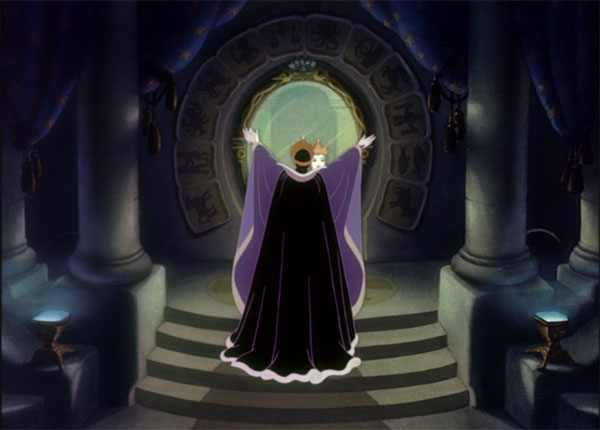
Once Upon a Time
It’s fitting that Disney’s first animated film starts with “once upon a time…” on the pages of a book. It’s a brilliant way to remind us that this story is one of many fairy tales. The text sidesteps the necessary exposition and drops us right into this world. When the camera zooms in to a typical castle, the stakes are clear for the Queen. She’s performed this ritual with the mirror countless times, but this day is different.
The Mirror identifies Snow White by her physical features, and that is important because it’s the Queen’s focus. She orders the Huntsman to kill Snow White because of her beauty, nothing else. The Prince marvels at her singing voice, but it’s also her looks that draw him closer. The song “I’m Wishing” is the first of many great songs. I’d forgotten about most of them beyond the obvious ones, so they were a nice surprise. The effect of Snow White’s voice echoing back to her in the well is a cool touch.
I love the efficient pace in these early scenes! The Prince sings “One Love” with Snow White and quickly leaves. Within minutes, the Queen makes the kill order, and the Huntsman gets cold feet after seeing Snow White’s beauty (of course). The shadow of the Huntsman looming over her sets the mood perfectly, and it’s played economically. Snow White runs off into the woods, and the story kicks into gear. We know little about her background, yet the dire scenario keeps us engaged with Snow White’s fate.
The Woods Are Alive!
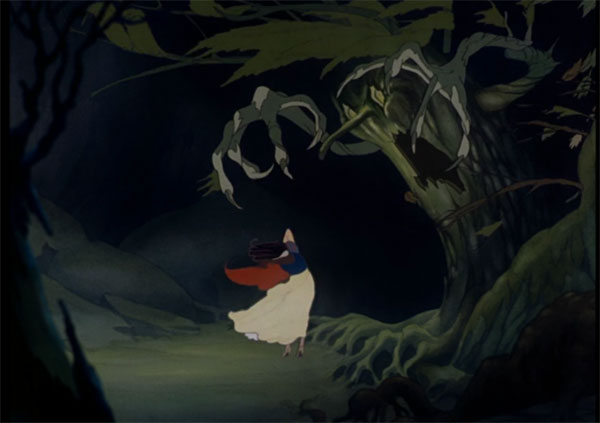
My favorite scene is Snow White’s terrifying run through the forest after leaving the Huntsman. The shots of trees with garish faces grabbing at her still pack a punch today. There is a strong influence of German Expressionism on this sequence with the fear coming alive and attacking Snow White. The trees seem ready to swallow her whole during this awful nightmare. The Cabinet of Dr. Caligari and Nosferatu are strong examples of German Expressionism from the silent film era that influenced this scene.
A big question hanging over this escape is how much we should take these images as reality. Do the trees represent Snow White’s terror after nearly avoiding death? Is the magical forest just another evil for her to overcome? I’m inclined to go with the first explanation, but Disney wisely just keeps the story going. Snow White wakes up surrounded by animals in a world very different from the frightening atmosphere of the previous night.
I should take a moment here to talk about Snow White as a character. She is the central figure of this story, but we know little about her. Animals connect with her, but little exists beneath the surface. She finds the dwarfs’ house and just walks right in without a care in the world. Her first inclination is to clean it rather than being worried about who lives there. This moment leads to the memorable song “Whistle While You Work”, but it also shows how Snow White interacts simply with everything.
The Hand Washing Conundrum
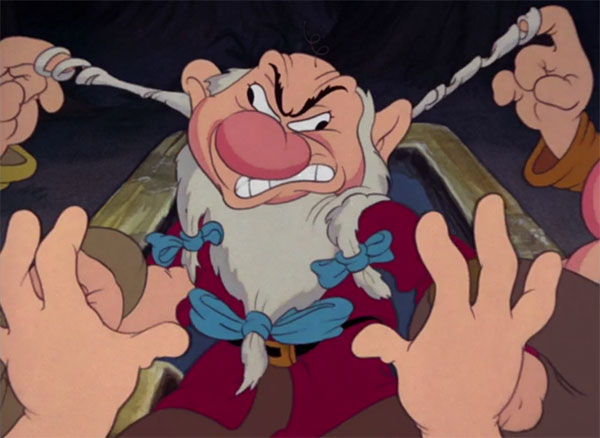
The movie’s first act moves efficiently through its plot, and it only takes about 20 minutes to get Snow White inside the cottage. A different vibe appears during the middle act, which introduces the seven dwarfs but also drags at times. All of the early scenes with them meeting Snow White are really strange! Dopey worries about a monster asleep in his bed, and grumpy makes it clear he’s “not a fan of females“. The gags with Sneezy trying not to sneeze are drawn out and just keep happening. It’s a lot.
The oddest part is the eight minutes (!!!) of time devoted to the dwarfs not wanting to wash their hands. Setting aside the connections to our current world of COVID-19, this sequence goes on for so long! Grumpy in particular is adamant that he won’t do it, and the others must force him. It goes back to Snow White’s perception of the dwarfs as children originally. They’re stubborn yet also can’t help to mostly follow her rules. This set-up humanizes the dwarfs, but it goes on for long enough to wear us down.
It’s a relief when we finally return to the Queen’s realization that Snow White is still alive. I love the shot of the Queen’s face in the cup when she ultimately transforms to the old woman. Much of this change happens with shadow, and it brings us back to the horrors of the scene in the woods. Meanwhile, Snow White and the dwarfs are dancing with no idea of the danger that is looming. The stage is set for the final act, and it’s easy to forget about the filler scenes to reach this point.
The Sleeping Death
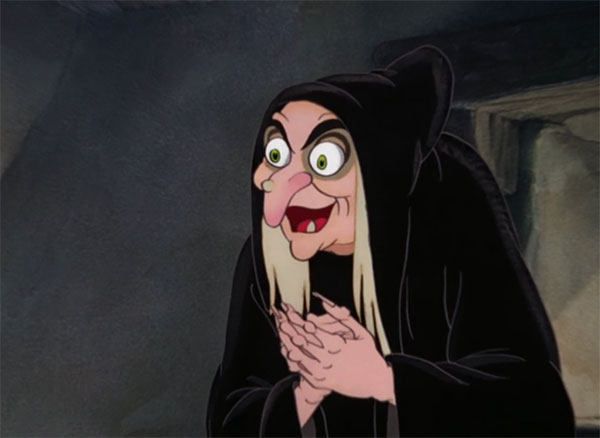
The scene with the Queen offering Snow White the apple is a master class in creating suspense. Birds attack this “poor old lady” and recognize the danger, while vultures lurk nearby and sense impending death. Mostly oblivious to the danger, the dwarfs march to work and leave Snow White at home. The cross cutting between Snow White getting ready to bite the apple and the dwarfs rushing back to save her is brilliant. We keep expecting a last-minute save, but there’s no reprieve from tragedy here.
When Snow White ultimately bites the apple, we see the Queen’s gleeful face as she savors the ultimate victory. The shot of the arm dropping the apple perfectly sums up a sad end to this tale (at least for the moment). There’s little time to reflect on Snow White’s fate, however. We switch to a chase scene as the Queen flees the vengeful dwarfs. A random lightning strike causes her demise, which ensures our heroes don’t commit murder.
Disney villains regularly fall to their death from high places; it’s a clever way to avoid seeing their ultimate demise on screen. Even so, the shot of the vultures drifting towards the Queen’s final resting place is pretty dark. It becomes easy to imagine them heading towards their next meal. Disney manages to retain the dark side of the source material without being so blatant about it. After the slower middle act, the rapid pace of the conclusion is surprising. There is no drawn out battle or complex plan for the Queen here. She takes care of Snow White and then dies minutes later.
Scary Adventures, a Mine Train, and a Grotto
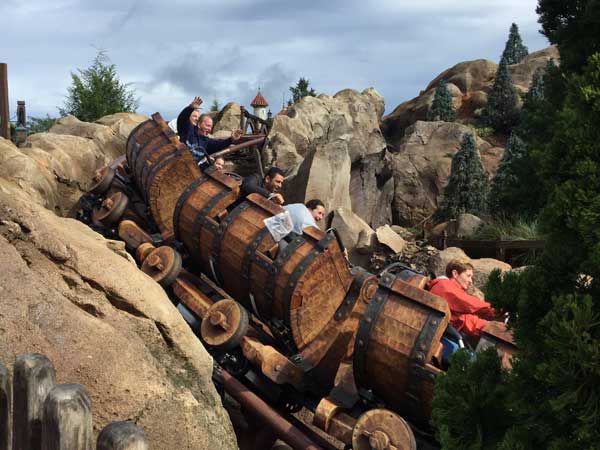
Looking at the parks, Snow White and the Seven Dwarfs has always had a strong presence given its status as the original animated feature. When Disneyland opened in 1955, Snow White’s Scary Adventures was an original dark ride in Fantasyland. It was changed dramatically to include Snow White in 1983, which made sense due to guest confusion. I prefer the idea of riders as Snow White experiencing her journey. The scares and darker side of this film take center stage here, particularly with the Wicked Queen. Disneyland’s version was set for a major refurb in 2020 to add new effects.
Disney took a similar approach when it opened The Magic Kingdom in Walt Disney World in 1971. Sadly, that attraction was replaced by the Princess Fairytale Hall in May 2012. This coincided with the opening of Seven Dwarfs Mine Train two years later. It’s a fun and well-themed coaster, and the dark ride portion inside the mine does a great job encapsulating that scene. Even so, I would have preferred to have both attractions to show different layers from the movie. We also glimpse the dancing scene (with the Queen outside) at the end of the coaster, but it goes by too quickly.
Another charming spot in Disneyland is the Snow White Grotto, which includes a waterfall and marble statues of the characters. The park needs relaxing places like the Grotto, and it’s great to see another tribute. The Imagineering Field Guide to Disneyland explains how the Snow White statue is actually the same height as the dwarfs. She’s placed on the hill above them to fool us with forced perspective. Nearby is the wishing well, where you can hear the echo of Snow White’s song playing there. It’s a well-themed and elegant space.
Rankings and Favorites

This section will eventually include rankings of each Walt Disney Animation Studios release as I watch them. Since this is the first entry, it doesn’t make sense to just list Snow White and the Seven Dwarfs at #1. IIt’s just a fun way to capture my opinions on the selections each time. The list will grow and also include my favorite villains, characters, and more.
Along with the rankings, I’m going to list my favorite aspects of each film individually. I’m starting with this small group of categories and may expand it as I come up with more ideas. It’s just another way to start the conversation with you and call out my favorite songs and scenes. I’d love to hear any ideas you have for other subjects to cover in this section. Here’s my first shot with my thoughts on this film:
- Song : “Heigh Ho” by the Dwarfs Chorus (Roy Atwell, Pinto Colvig, Billy Gilbert, Otis Harlan & Scotty Mattraw)
- Scene: Snow White flees through the terrifying woods
- Character: The Queen
- Shot: The queen’s face reflects in the glass before transforming (see above)
- Surprise: The aura of darkness lurking beneath the fairy tale
Creating the Foundation
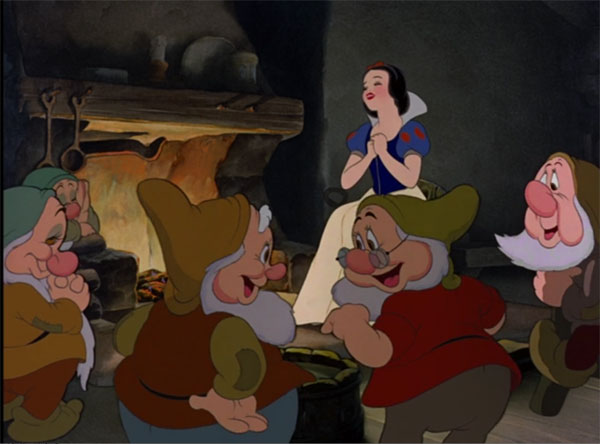
It’s easy to take the success of Snow White and the Seven Dwarfs for granted. In today’s movie world, feature animation is a powerful genre that draws crowds to theaters. So much of this film has also entered pop culture, including the idea of the “Disney princess”. Songs like “Someday My Prince Will Come”, “Whistle While You Work”, and “Heigh-Ho” remain prominent even with people that aren’t big Disney fans.
Looking at the film itself, its highlights are remarkable given the lack of an established genre. The first and third acts move quickly and pack a lot of story into a limited time frame. Snow White isn’t a great character and could use more dimensions, but we are talking about a film from more than 80 years ago. While there are some cringe-worthy lines, and the love story is rushed, the overall impact of the story remains strong.
Even during the slower middle act, I appreciated the weird moments of character. The meandering pace allows us to watch the dwarfs struggle with the changes of having Snow White in their house. We aren’t rushing to the next scene, and the Queen’s mission takes a big seat while we hang out with these characters. We can also explain the pacing by recognizing that Disney was creating an entirely new genre. There were no models to follow, which makes its success even more impressive.
What do you think about Snow White and the Seven Dwarfs? Do you have suggestions for this project? Leave your comments below!
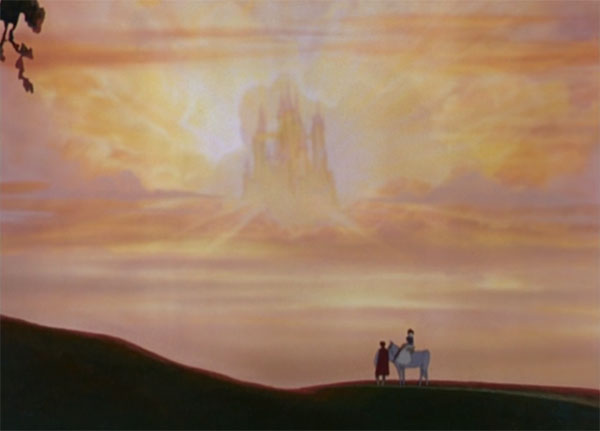
Related Articles: Snow White and the Seven Dwarfs
The Adventures of Ichabod and Mr. Toad (1949)
Disney’s Fun and Fancy Free (1947)
This post contains affiliate links. Making any purchase through those links supports this site. See full disclosure.



I must have been quite young when I first saw the movie, because I mostly remember being so terrified that I never wanted to see it again. I also remember trying to re-enact the “splutter and splash all over the tub” song by covering my face with soapsuds and then burbling into my bathwater. Looking back from adulthood, I do have to wonder why that entire washing-up scene and song were in the movie. Was it satirizing a scene from another 1930s flick? Does the dwarves’ cleanliness level matter one iota? Wouldn’t Snow White herself have been better off with a dirty face, making her less “fair” and therefore less noticeable to the magic mirror? Have I failed to grasp some greater underlying symbolism? Anyway…I enjoyed your writeup, and now I will need to rewatch the 1937 Snow White in its entirety, with remote-control in hand, and my husband’s protective arm around my shoulders.
Thanks Marian. I suspect the washing scene was designed for comic relief and to humanize the dwarfs and their relationship with Snow White. It also set her up as the “mom” for the dwarves since she was forcing them to wash. The main story surrounding this scene is also pretty dark too, so Disney probably wanted to get audiences some levity. I’m only speculating, though, and I know there are books and other articles that likely would provide a lot more details on the entire film. Regardless, that scene goes on for a really long time! I appreciate the comment.